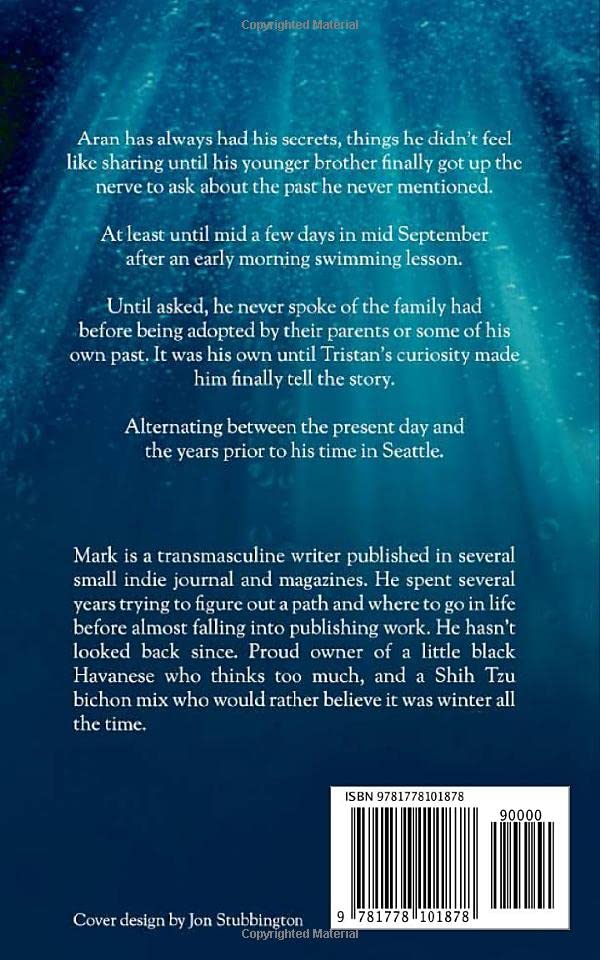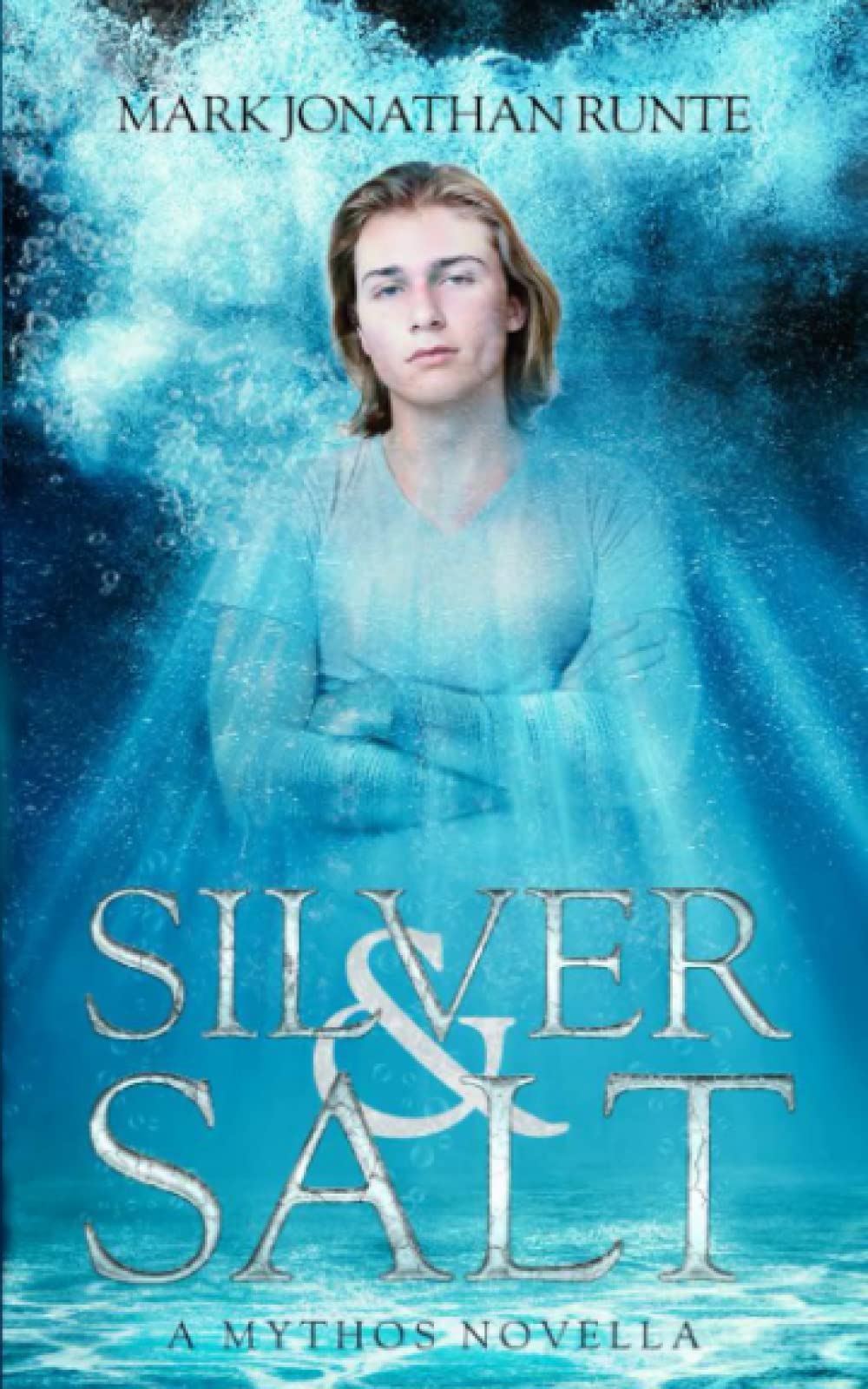

Written by Mark Jonathan Runte
Mark Jonathan Runte is a prolific author. It’s for this reason that June is the third month in a row I find myself reviewing his books. April brought us the Midwinter Nights duology, with short stories Wolf Prince of Kstovo and Zolushka; and May brought the second novel in his Mythos series, Bound in Blood. I reviewed the first novel in that series, Ash, all the way back in August 2022. To be fair, Silver and Salt, a novella set in Runte’s Mythos world, isn’t a new release—but Faerie Thief is, and I’ll have that review to you on Wednesday—but after taking delight in the aforementioned Bound in Blood, I realised I had to read this novella. And I must say I’m glad I did.
If you read my Bound in Blood review (if not, I provided the above link for a reason), you may recall that I jumped straight in to discussing how it works as part of a series. While Mythos doesn’t simply chronicle the adventures of one set of characters, that book featured the return of Aran and Tristan, the lead characters from Silver and Salt. As much as the aforementioned novel stands alone, and can easily be enjoyed in isolation of the other Mythos stories, Silver and Salt also stands alone. There’s connective tissue with Ash, with referenced characters appearing here, but neither book suffers for it; instead, these connections add vibrancy to Runte’s world.
At 183 pages in paperback (157 pages in hardcover, or an estimated 126 pages on Kindle), Silver and Salt is a quick read. Based on the page count alone, it comes in at about half the length of the novel that follows it. Part of this is dedicated to extra material—something I’m a sucker for—with some wonderful deleted scenes. This book may be a swift read, but it is packed full of story. One thing I often find with novellas—and shorter works in general—is that some authors don’t write for the format. Sometimes, the story is spread too thinly, and would have been better suited to a smaller book; other times, there is too much story packed into the shorter page count. Runte is an expert at writing for the book’s length, whether it’s the fables told in the Midwinter Nights short stories, Ash and Bound in Blood’s long form stories, or the novella you’re reading about now.
That Runte has included the right amount of story for Silver and Salt’s length is made all the more impressive by the fact it doesn’t just tell one story, but two. Instead of it feeling overstuffed, the two tales work to form a whole as this device works for the format perfectly. This is a book you can easily read in a single sitting, with the two intertwined tales juxtaposing with each other nicely. The stories flow together well, feeding into each other in a way that these short stories connect without overstaying their welcome.
The novella revolves around Tristan, the younger brother, curious about Aran’s past. The primary story, set in the “modern” day—1993, before most of us were online to read book reviews—tells a tale about Aran and Tristan. The secondary story—which I enjoyed more, but it’s a personal preference instead of a difference in quality—is set circa 2100 BC; featuring the Greek god of the seas, Poseidon. I won’t get into the specifics of how Poseidon factors into the story, aside from noting Mythos’ love of Greek mythology, nor the modern day events, as to not spoil the story. While going into the book, I was aware of how Greek myth plays into Aran and Tristan’s story (not to mention the larger Mythos world), if you read this before Bound in Blood, you’ll be better off knowing as little as possible. Doubly so if you haven’t read Ash, either.
Not only do the two stories tie in with each other narratively, they connect on a thematic level as well. Silver and Salt is a story about familial relationships and how we connect with those closest to us. The stories demonstrate that blood isn’t necessarily thicker than water (pun very much intended; myself very much proud of said pun), and family—whether functional or dysfunctional—is about those we’re raised with. The relationships are honest, as are the issues the characters experience. Like the previous Mythos books, this is an urban fantasy featuring mythological figures, but at its heart are the characters’ relationships.
Fictional relationships are only as strong as the characters involved in them. Regardless of whether they are human, mythological figure or something else entirely, Silver and Salt’s characters are all thoroughly engaging. I was already a big fan of the book’s major characters, and it was great catching up with them again. Aran is a strong protagonist, and Tristan is a wonderful supporting character, and the two play off each other well. Having met them in Bound in Blood, it was great to see them in their younger years. Tristan, in particular, is entertaining to read about this time—an adult in Bound in Blood, he is just five in this earlier entry. The author has presented a five-year-old who reads exactly as his age, rather than overly precocious. His dialogue fits the age perfectly, and all the other characters’ dialogue works just as well. While other characters don’t have as much space dedicated to them, they remain thoroughly engaging as they entertain the reader.
Runte’s style of prose is clear and concise, without overloading it with unnecessary detail; something that suits the shorter format well. The writing gives the reader all the information they need to know without overloading it with unnecessary detail. The style is welcoming to readers of most ages, ensuring they can make their way through it easily. While I wouldn’t classify it as a young adult book, the prose takes a similar approach, ensuring that Silver and Salt is accessible to whoever wishes to read it.
If you haven’t read any of the Mythos series, Silver and Salt is a great introduction to the world that doesn’t require much investment. In its short space, it weaves an entertaining tale split across two periods. If you are familiar with the Mythos series, it expands upon the universe and mythology wonderfully, rewarding the effort to follow the series. With Runte’s skill at writing short stories, I can’t wait to read Faerie Thief next.
Favourite Passage
Soft, pale blue light glittered through the stable’s open windows. The color of the sea in the mortal realm and a near match for the blue of his wife’s eyes. He kissed Theia, not caring that they were tangled together on a pallet in the barn’s loft rather than in the hall with the sailors taken into Poseidon’s care after a death at sea.
A fish swam by, odd to anyone not used to the sight, barely worth mentioning to either of them despite the apparent lack of water in the stable, or for the horses resting within their stalls. Theia smiled, following its meandering path before it vanished through one of the stable walls, returning to its true element.
Poseidon’s realm with both within the water and outside of it, little difference made by the sea life that interrupted their trysts on occasion.
Silver and Salt: A Mythos Novella, Chapter Four
Silver and Salt: A Mythos Novella was purchased for the purpose of an honest review.
Silver and Salt is available in paperback and on Kindle, exclusive to Amazon.
Note: I do not post scores for reviews on this website, but do post them on my Amazon and Goodreads reviews:
- Amazon
- Goodreads
You can follow Mark Jonathan Runte online, via:

Interested in purchasing Silver and Salt?
Please find a link below; please note I do not collect any proceeds from the sale.
Silver and Salt: A Mythos Novella

